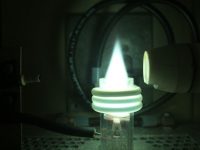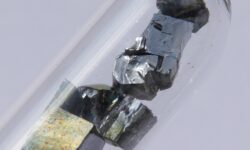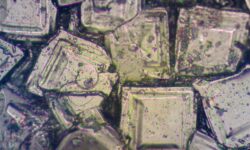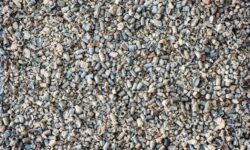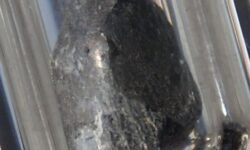Introduction to Elemental Spectroscopy
Elemental spectroscopy measures in-service fluid samples for wear metals, additives, and contaminants. The method used to perform the measurement is properly termed Inductively Coupled Plasma Atomic Emission Spectroscopy (ICP-AES) and the results are commonly referred to as ICP or spec results.
The measurement is performed by diluting a sample with solvent and injecting it into a plasma where it is ionized (essentially burned at a temperature of nearly 10,000 K (hotter than the surface of the sun). Each element on the periodic table emits a unique color of light as it is ionized, and the instrument measures the intensity of these colors to determine the concentration (reported in part per million – ppm).
A noteworthy limitation to this test is that the sample must completely ionize within a very small, measured area of the plasma. As such, only particulate within 0-5 microns is accurately measured, and particles larger than 10 microns are essentially not measured at all. Wear particles generated under normal conditions and airborne contaminants easily fall within this range, however severe wear and/or contamination may produce particles too large for detection and would require supplemental testing such as particle counting or analytical ferrography.
Though additives are sub-micron and will always be detected by this method, a second fundamental aspect of this test must be considered: this test only measures elements, not compounds, alloys, or chemicals. Though certain elements may appear in the results and be safely assumed to be from certain types of additives, this test does not confirm the functionality of those additives. While additives are slowly consumed, so long as they remain present in the fluid, the results will not decrease significantly.
The table below contains links explaining the common causes for each parameter to change, including possible sources of the elements. Click on any of the red text to see a deeper explanation of each item.
| ELEMENTAL SPECTROSCOPY (ppm) ASTM D5185 Mod (-) indicates below detection limit | |||||
|---|---|---|---|---|---|
| NEW OIL | 8/27/2016 | 6/18/2016 | 5/14/2016 | 4/26/2016 | |
| Lab No. | 1584169 | 1639886 | 1620613 | 1607160 | 1601898 |
| WEAR METALS | |||||
| Iron | - | 7 | 21 | 26 | 30 |
| Copper | - | - | - | - | - |
| Lead | - | - | - | - | - |
| Aluminum | - | - | - | 3 | 2 |
| Tin | - | - | 5 | 3 | - |
| Nickel | - | - | - | - | - |
| Chromium | - | - | - | - | - |
| Titanium | - | - | - | - | - |
| Vanadium | - | - | - | - | - |
| Silver | - | - | - | - | - |
| ADDITIVES | |||||
| Calcium | - | 44 | 43 | 132 | 142 |
| Magnesium | - | - | - | - | - |
| Phosphorus | 369 | 387 | 389 | 338 | 368 |
| Zinc | - | 50 | 25 | 58 | 70 |
| Barium | - | - | - | - | - |
| Molybdenum | - | - | - | - | - |
| CONTAMINANTS | |||||
| Silicon | 12 | 4 | 6 | 10 | 8 |
| Boron | - | 15 | 10 | 21 | 21 |
| Lithium | - | - | - | - | - |
| Sodium | - | - | - | - | - |
| Potassium | - | - | - | - | - |


